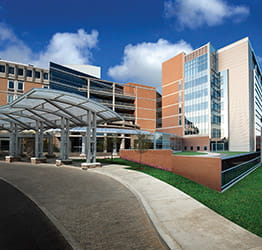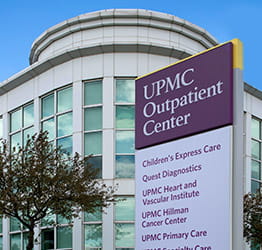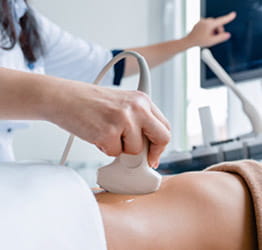On this page
What Is Ductal Carcinoma in Situ?
Doctors define ductal carcinoma in situ (DCIS) as a Stage 0 noninvasive breast cancer that starts and is contained inside the lining of the milk ducts.
The ducts — one of three key parts of the breasts — are the tubes that carry milk to the nipple.
The two other key parts of the breast are:
- Lobules — The glands that produce milk.
- Connective tissue — Fibrous and fatty tissue that surrounds everything and holds the breast together.
DCIS is also called intraductal carcinoma or Stage 0 breast cancer.
What is invasive ductal carcinoma?
Invasive ductal carcinoma occurs when mutated cells from the ducts spread into the breast tissue. If left untreated, invasive ductal carcinoma can metastasize (spread) to other parts of the body.
Invasive ductal carcinoma is the most common form of breast cancer in the U.S.
How common is ductal carcinoma in situ?
DCIS is the most common form of noninvasive breast cancer, accounting for one in five new breast cancers.
What are the stages of ductal carcinoma in situ?
Breast cancer is staged up to Stage 4. Ductal carcinoma in situ is the earliest stage of breast cancer — Stage 0 — because it hasn't spread from the lining of the milk ducts.
The lower the breast cancer stage, the less the cancer has spread in your body.
What are ductal carcinoma in situ risk factors and complications?
Ductal carcinoma in situ risk factors
Anyone can develop ductal carcinoma, but certain factors may increase your risk of any breast cancer.
These include:
- Drinking alcohol — Even one drink a day can increase your breast cancer risk.
- Being overweight or obese — Especially if you're overweight after menopause. (But exercising may reduce risk for this age group).
- Being born female — Although men can also get breast cancer, the biggest risk factor for breast cancer is being female at birth.
- Age — Most breast cancer is found in women ages 55 and older.
- Family history — An estimated 5% to 10% of breast cancers are hereditary, commonly from an inherited mutation in the BRCA1 or BRCA2 gene.
- History of breast cancer — If you have cancer in one breast, you're at higher risk of getting it again in the same breast or the other breast.
- Getting your first period before age 12 and/or going through menopause late — The more periods you have, the higher your exposure to the hormones estrogen and progesterone.
- Having no pregnancies or your first pregnancy after age 30 — Multiple and earlier pregnancies reduce your risk of breast cancer.
- Not breastfeeding — Breastfeeding may reduce breast cancer risk, especially if you breastfeed for at least a year.
- Taking birth control — Methods with hormones can increase your risk of breast cancer.
- Hormone therapy — Hormonal therapy for menopause can increase your breast cancer risk, typically after four years of use.
Complications of ductal carcinoma in situ
Left untreated or undiagnosed, the mutated cells can grow out of the milk ducts and into the breast tissue. It's then considered invasive ductal carcinoma.
After treatment, people who’ve had DCIS have a higher risk of developing other diseases as they age. These conditions include heart disease, high blood pressure, and osteoporosis.
Back to top
What Are the Signs and Symptoms of Ductal Carcinoma in Situ?
DCIS may not have symptoms. Most times, ductal carcinoma is found during a routine mammogram.
DCIS symptoms include:
Back to top
How Do You Diagnose Ductal Carcinoma in Situ?
Your doctor will likely do a breast exam and order tests to diagnose DCIS.
Tests to diagnose ductal carcinoma in situ
Imaging tests for DCIS include:
- Ultrasound.
- MRI.
- Mammogram with computer-aided detection (CAD) — Uses a phosphor plate, rather than film, to view mammography images. CAD is software that highlights tissue abnormalities in a mammogram.
- 3D mammogram (tomosynthesis) — Uses low-energy x-rays to create a 3D image of the breasts.
- Minimally invasive breast biopsy — Uses a needle to extract a tissue sample from the breast to test for cancer cells.
Ductal carcinoma in situ prognosis
Nearly all people with DCIS can be cured.
Back to top
How Do You Treat Ductal Carcinoma in Situ?
Surgery is often the primary treatment for breast cancer, including DCIS.
Surgery for ductal carcinoma in situ
Surgeries for DCIS are:
- Lumpectomy or mastectomy — The surgical removal of part of the breast with a cancerous tumor (lumpectomy), breast tissue, or the entire breast (mastectomy). In some cases, lymph nodes also are removed. In rare cases, some of the chest muscles are removed, too.
- Sentinel lymph node biopsy — A minimally invasive procedure to remove lymph node tissue in the armpit to check if existing breast cancer is metastasizing (spreading). People diagnosed with invasive breast cancer typically undergo a sentinel lymph node biopsy.
- Axillary lymph node dissection — Surgery to remove all or a group of lymph nodes in the axilla (armpit), if your sentinel lymph node biopsy is positive for cancer.
Additional breast cancer therapies
- Chemotherapy — Drugs to destroy the ability of cancer cells to grow. It's sometimes used with radiation therapy.
- Radiation therapy — Beams of high-energy waves of ion particles used to destroy the ability of cancer cells to grow. External radiation therapy directs rays from outside a person's body.
- Hormone therapy — The use of drugs that stop the production of certain hormones that cancer needs to grow.
Back to top
By UPMC Editorial Staff. Last reviewed on 2025-09-18.
















